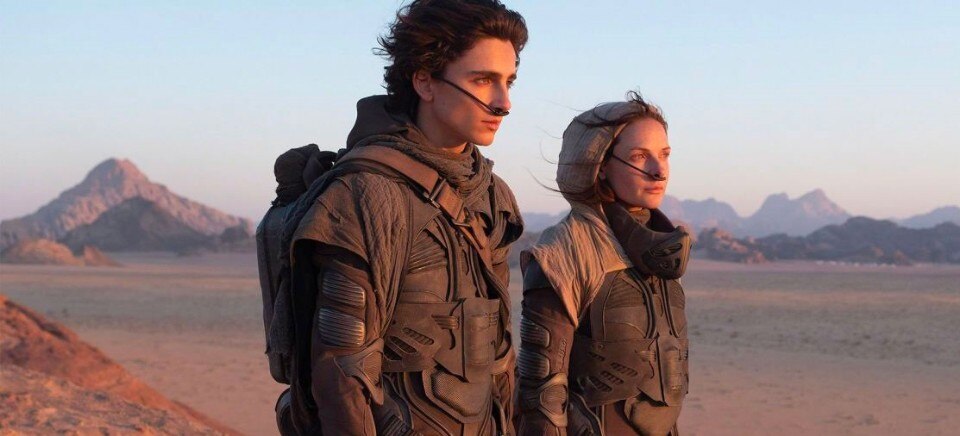This is the modern blockbuster. Or at least one of them. In the years when Marvel has been making films that are all scripted and visually weak, Fast & Furious wants to become the king of the box office and even 007 films have given up on sophistication, another world is appearing. It is that of gigantic films, mainstream but with a taste for art, the most spectacular fusion of industrial machine and artistic thinking. Denis Villeneuve was among the forerunners of this era with Arrival (also presented at the Venice Film Festival, willing to launch this kind of cinema), restated it with the impossible sequel to Blade Runner, and now raises the stakes even higher with Dune.
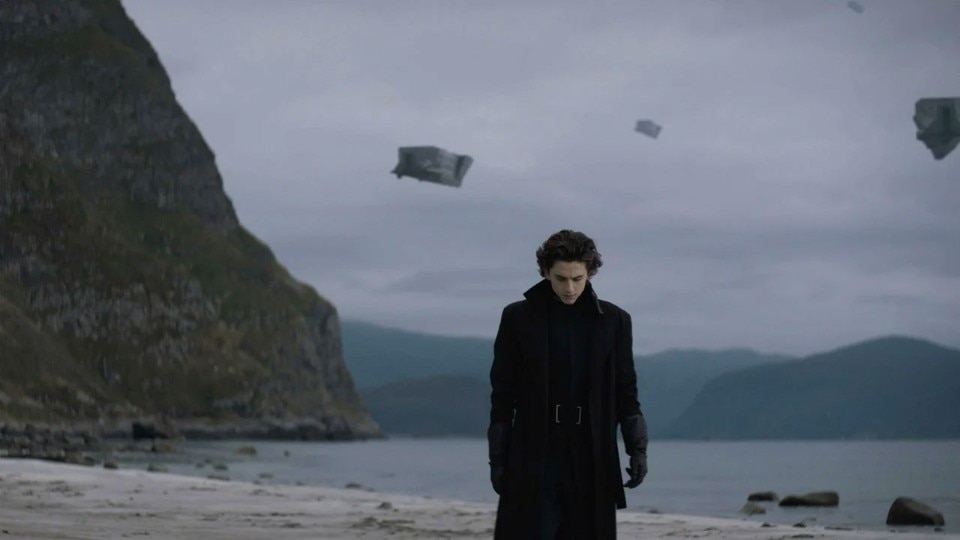
Rarely in recent decades have we seen the huge Hollywood machine go so far in terms of visual research. Dune is a giant film, and it is only the first part of the story (another one, which will close it, has yet to start filming). It does not want to be like the others: it is the story of an exceptional scion in a remote future (the year 10191), and it uses design, architecture, music and installations to make the audience understand it. It speaks the language of different art forms. The words, though there are plenty, are used to list data, to unfold the story of how the noble house of Atreides was appointed by the emperor to replace the Harkonnen family at the helm of the most important planet of all, the one where the spice, the indispensable powder for interstellar navigation, is extracted. The oil of the future.
Dune is muscular cinema of impressive power. It doesn’t want to attract the audiences with love stories or the petty torments of ordinary people, it wants to dazzle with the stories of exceptional individuals, outside all rules. This giant-size film, which recounts epic clashes and perhaps the arrival of the Chosen One, has nothing to do with David Lynch’s 1984 film, massacred by cuts and impositions (but it has enough heart to steal from him the slightly vintage effect and the shade of blue of the eyes of the characters who live in contact with the spice). It is a type of cinema closer to Nolan’s, incredibly ambitious and exceptionally serious, only more ambitious in its visual reach.
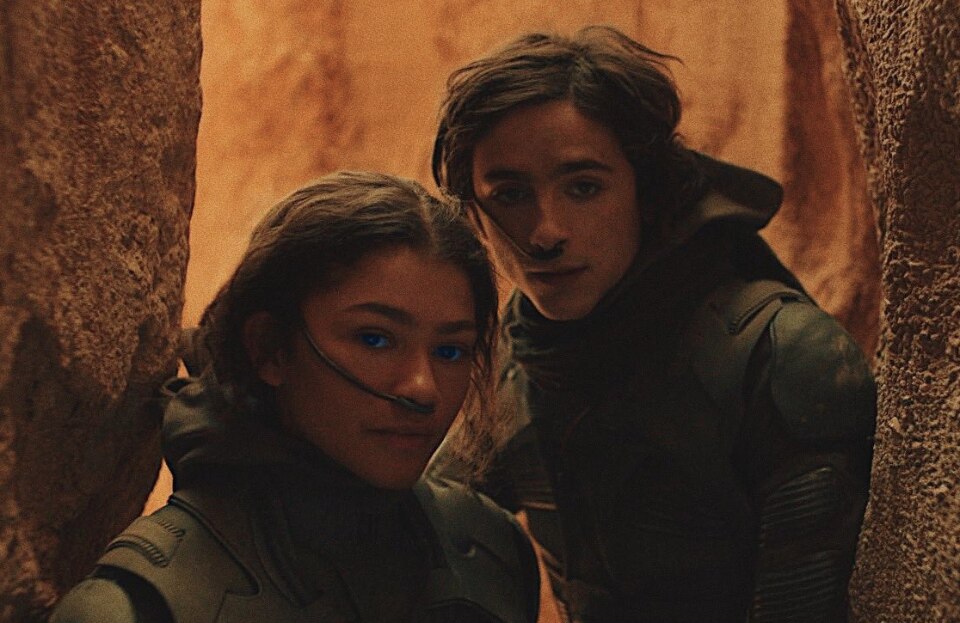
Apart from the data and the parties involved (there is also a population of natives who master the sands), from the start the audience must understand many things: how this future works, who the protagonist is and the problems he has to face. A whole universe has to be explained and it has to be explained clearly so that every viewer can understand it easily. Villeneuve has learned from the history of science fiction that images are more universal than words, and so he uses both together. The dialogues explain the political intrigues and how this change is a move of the emperor to set Harkonnen and Atreides at war, while the views of the colony where the Atreides family arrives (reminiscent of the images Syd Mead invented for Blade Runner, reminiscent of Mayan pyramids) scream the grandeur of the regime, speak of abuse with their arrogant shapes alone. The large, spacious interiors, with their high ceilings, speak of a vision of nobility similar to that of ancient Egypt; the walls decorated with gigantic worms introduce us to the creatures that crawl in the dunes, but it is the interior design, minimalist in an oriental style, that tells us there is great spirituality in this world. Rather than stating it, the film helps us understand it for ourselves.
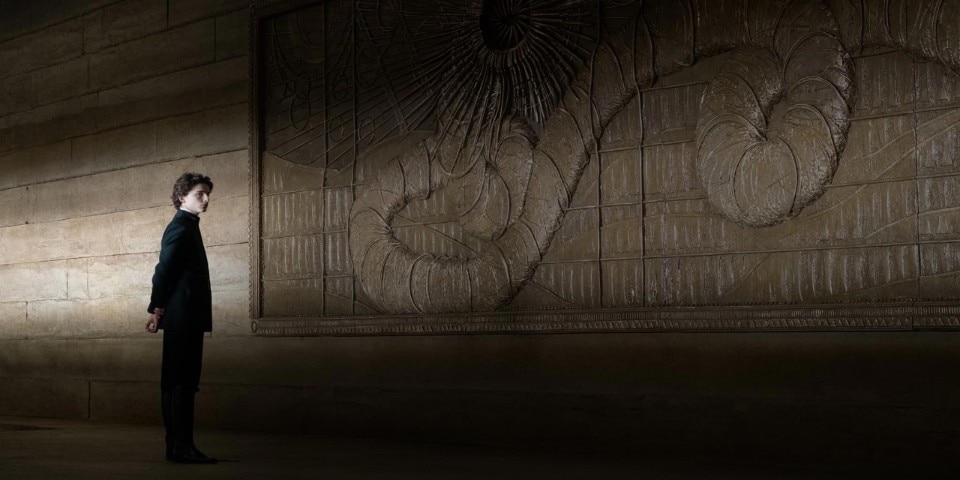
Again, to survive in the desert you need a suit invented by the indigenous population that turns lost liquid into drinking water and thus keeps the person that wears it hydrated, and a single shot of a rat makes us realize this system imitates the way local life forms survive. Inside the palace characters of different orders (some belonging to a sorority with psychic powers) must be distinguished and in both cases the tailoring does wonders to recall and explain; even the fights have unique dynamics as a result of the technologies employed that distinguish parries (blue) from strikes (red), creating colours that explain but also fascinate. There is an assassination attempt on the protagonist (an excellent Timothée Chalamet, who is becoming the face and body of the “gifted, sophisticated and powerful youth” of contemporary cinema) which he manages to avoid by blending into a projected video, a sort of art installation that can be crossed like a hologram that he uses to get information. Nobody explains it, we understand it ourselves. And finally there is the music, by Hans Zimmer, made of deafening noises, as he often does lately, and inspired by the avant-garde, which works well with the booming voices of the thoughts that the characters hear in their heads.

Because young Paul Atreides, the scion of the family, was raised by a mystical mother, he is able to speak with his mind, he is an antenna that receives messages and has premonitory dreams. It is the mystery of the film that keeps you gripped and makes you look forward to the sequel. In addition to the political intrigue, Paul Atreides discovers (through dreams) that something big is about to happen, something that will change everything. That sense of looming menace is all down to the soundtrack, while the fascination with this new planet to Villeneuve’s visual care in creating textures with the dunes, as if the natural fabric had been carved.
There is not a frame of Dune that is lacking design. Design of fabrics or interiors, industrial design of vehicles (designed to be shaped like animals like those in Star Wars, which itself stole so much from the Dune novels) and visual arts design.
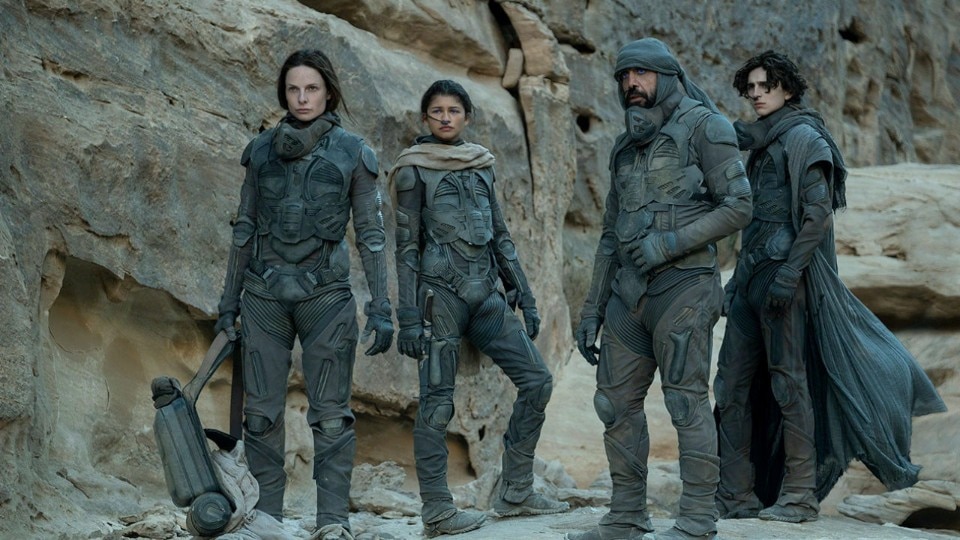
In a film industry overflowing with content, much more than can be seen, Warner Bros. knows that the future lies in the ability to stand out from the crowd, to be recognisable and to rise above the rest of the competition and the conventional. You can do this with a well-known and beloved intellectual property (i.e. with Batman or Lego), you can do it with an incredibly popular actor playing the protagonist but you can do it very well with the audacity of a unique vision as in the case of Dune, which takes everything we know about cinema (and art) to mix it again in a way never seen before and delivers a product like Dune. Familiar to lovers of the genre and spectacular at a Hollywood level, capable of speaking the mainstream language of cinema but with the precision and courage to go a little further than art cinema.
All images: stillframes from the movie Dune.


